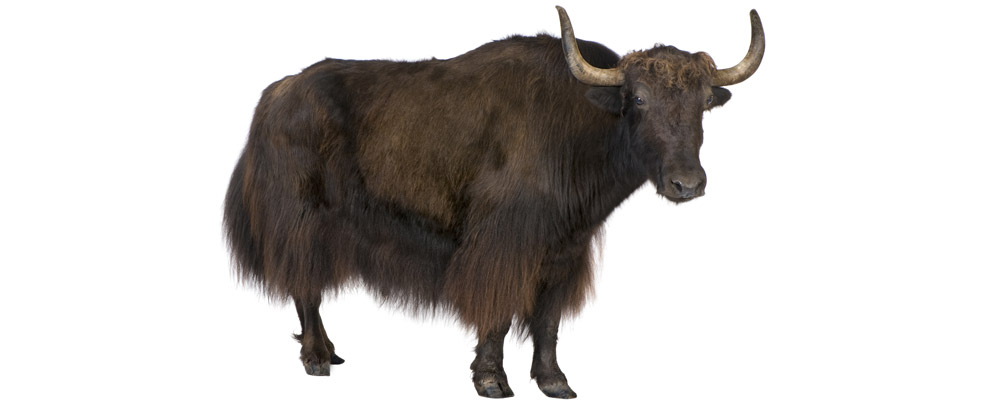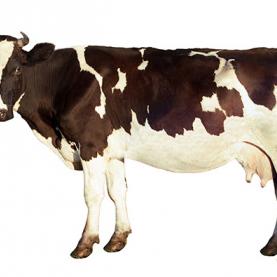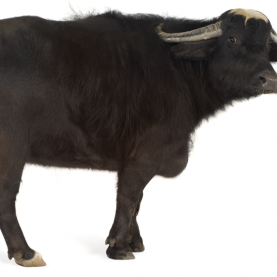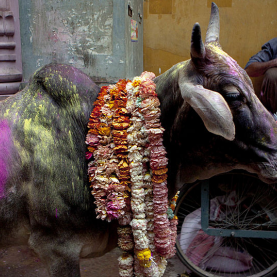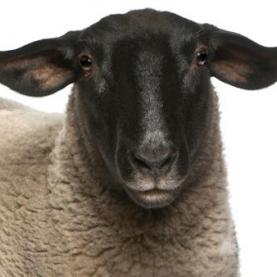Yak
Yaks live at high altitude and feed mainly on grass. Male yaks are valuable for carrying heavy loads (up to 130 kg each), while the females provide milk which can be processed into butter and cheese. In Bhutan and on the high Tibetan plains, these products are frequently traded for clothes or other food.
The origin, distribution and domestication of yaks
Yak fossils dating back more than 100 000 years have been discovered in Mongolia, but the yak’s first ancestor is thought to have lived more than 2 million years ago. Yaks live mainly in the Himalayas and on the Tibetan plateau, although they are also found in northern and southern Asia and a small number have been imported to other parts of the world, such as the Caucasus and North America.
It is believed that the Qiang people in Tibet domesticated wild yaks almost 10 000 years ago. Yaks proved to be valuable as beasts of burden as well as for the resources they provided, such as milk, leather and meat, thus contributing to the economic prosperity and progress of this mountainous region. The majority of yaks are now domesticated and the few wild yaks remaining in Tibet are protected.
Breeding yaks
Yaks are considered to be remarkable domestic animals, capable of survival in extreme conditions while providing humans with a means of subsistence. They generally live at an altitude ranging between 2000 and 5000 m. These ruminants grow to an impressive size, more than 3 m in length, weigh between 230 and 1000 kg and have horns measuring up to 90 cm. Their coat consists of a layer of thick hair along the back, long hair forming a fleece on the body and lower parts, and a woolly layer below, protecting them from the cold.
Yak breeding is mainly a family business, used as a means of subsistence and trading. The animals remain on grassland throughout the year, except when there is heavy snowfall. Average families have around 50 yaks, while monasteries, royal or wealthy families may own herds of up to 200 yaks. Male yaks are used as pack animals, to transport heavy loads, and as mounts. At around the age of eight, they are then sold for their meat. The females are mainly used for the production of milk, up to the age of 12 to 15 when they are also sold for their meat.
Use of a yak’s resources
Yaks provide a number of resources, including milk, meat, leather (for rugs), hair (for ropes and clothes), and excrement (for fuel).
Most of the milk is transformed into butter and cheese, but some is consumed in sweet milky tea. Yak milking and butter and cheese production are all performed manually. Two types of dried cheese are produced: small and sweet white dried cheese, and black dried cheese, which owes its colour to the burning of yak dung as it dries.
The meat is dried in the sun, in cold, dry air, or may be smoked, which helps preserve it longer. In Tibet and Nepal, yak blood is used to make a sort of blood sausage called gyurma.
Yaks’ sacred dimensions
According to Tibetan Buddhism, a yak’s head, eyes, intestines, hair, hoofs and heart were transformed into the sun, moon, stars, rivers, lakes, forests and mountains. Yak bones represent its spirit and are a symbol of purity, strength and courage. These bovids are also used in local medicines: The mucus from their perspiration, for example, protects against the cold.
WIENER, Gerald, JIANLIN, Han, RUIJUN, Long, 2003. The Yak. In: The Regional Office for Asia and the Pacific Food and Agriculture Organization of the United Nations. Thailand : Bangkok.
ISBN 92-5-104965-3
DERVILLÉ, Marie, 2013. L’élevage des yaks au Bhoutan. Diversité des structures d’élevage et des fonctionnements technico-économiques : quels indicateurs systémiques de viabilité ? Études mongoles et sibériennes, centrasiatiques et tibétaines [en ligne]. 20 septembre 2013. N°43-44. [Consulté le 16 février 2016]. Disponible à l’adresse : http://emscat.revues.org/2149



